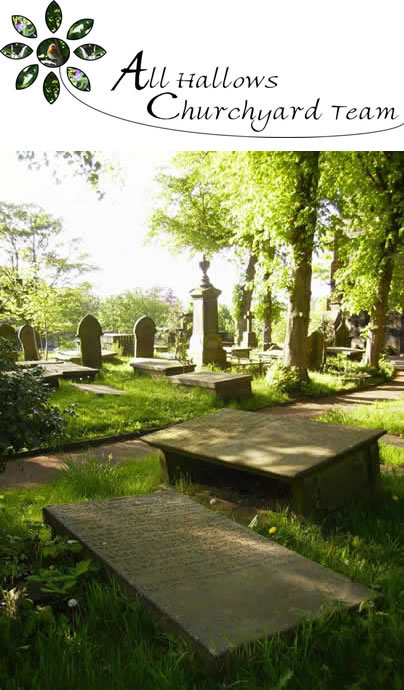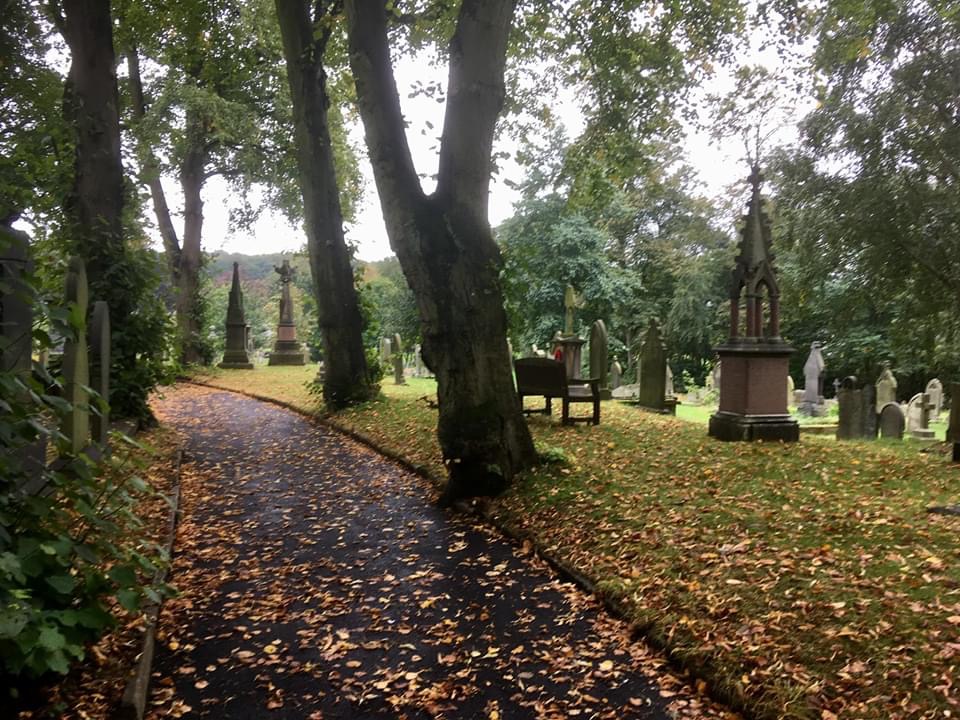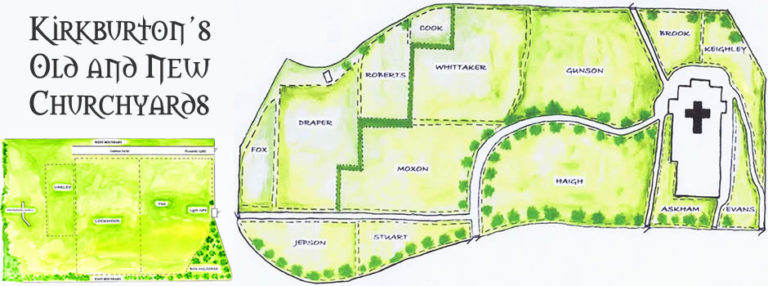The Wilderness Years
In 1999 the Old Graveyard of All Hallows’ Kirkburton had become an area of unnatural beauty. Covered in brambles, nettles, and elder, most graves were unreachable and in many cases completely hidden.
As one of the principal churches of the Huddersfield area, it received many visitors from around the world who would have had great difficulty in any quest for the graves of relatives.
An attempt to clear the area by a couple of villagers petered out through lack of interest and time available, but it did uncover one grave of interest.
Gunner Benjamin Smith RA fought under Wellington at Waterloo, and returned to Kirkburton until he died at 52, leaving enough for his widow to provide a large gravestone with his Waterloo Medal carved upon it.
By 1980 it had been completely covered by 8 foot of elder, which prompted the thought of how much more history might lay beneath the wilderness.



Millennium Year
So in millennium year, a group of villagers and church members attacked the problem in earnest helped by the Church and local businesses who provided equipment and advice.
The principal aim of the Churchyard Team, as it is now known, was to create a traditional English churchyard that was not only the resting place of local inhabitants but a reminder of its history and even more a haven for traditional flora and fauna.
Whilst mowing strimming and pruning one could not help but notice the occasional inscription referring to the loss of a young couple’s children or a family’s son killed in action and interred “in some foreign field”.
One grave reminds us of local history in that it records the drowning of Samuel and Lydia Midgley with their niece Eliza Mathews in the flood caused by the bursting of the Holme Reservoir on the Fifth of February 1852.
Grave Records
Every week a member of the team would be approached by a visitor asking for the location of his or her relative’s grave. A search through the photocopy of the churches records (the originals are held in Wakefield) would give some indication to a site of burial but the records are not complete and the plans bear no relation to the ground as it is today.
The Old Graveyard was divided up into areas named after prominent families, or a Team Member, who had done most to turn a wilderness into a site suitable for a Jane Austin serial.
The areas were then mapped, with graves entered as Marked or Not Marked, which meant it had no stone (but was a mound of grave shape), or the grave had some stone slab or surround with no inscriptions. These may have been removed or destroyed during the last 200 years.
